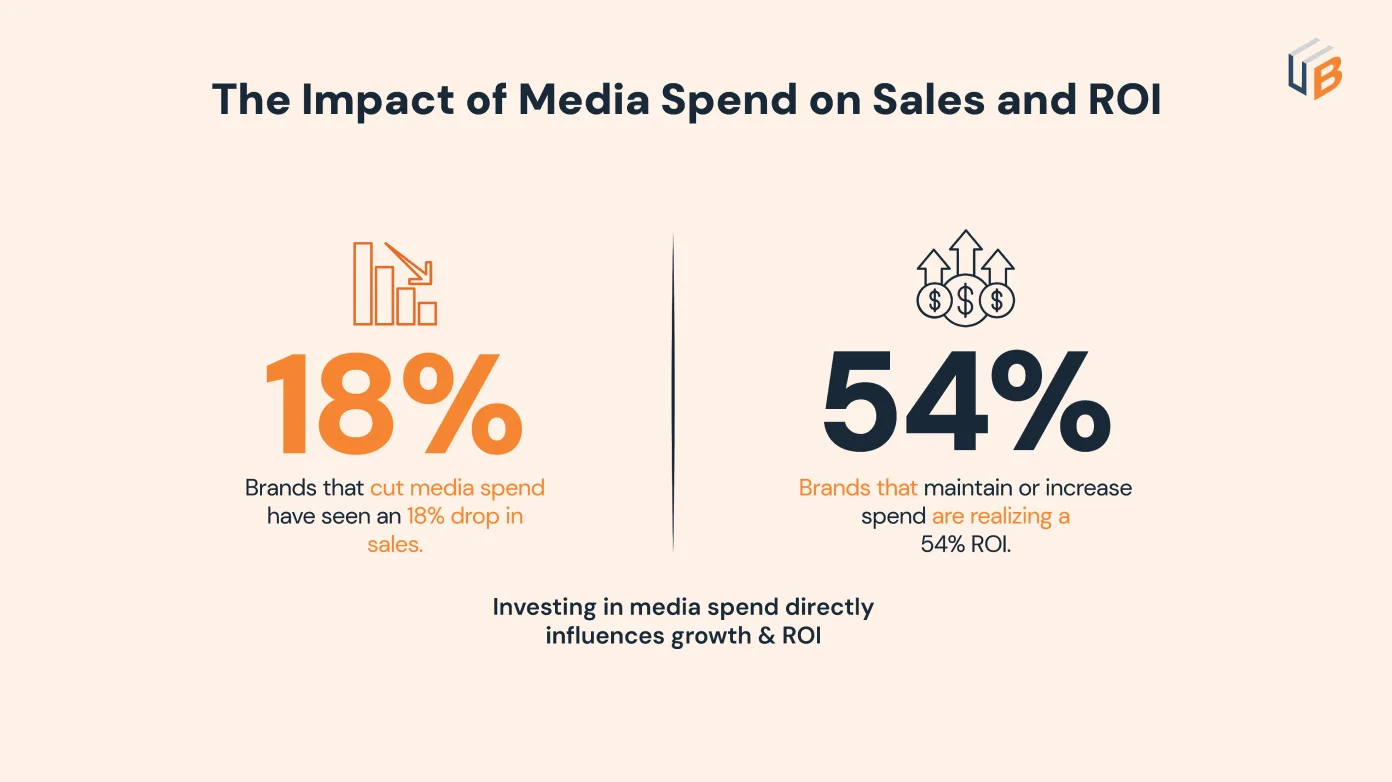
How to Pivot B2B Marketing Strategies During Economic Uncertainty to Drive Growth
In this article
Introduction
Face Economic Uncertainty Head-On
- Cuts as high as 20% have slashed marketing budgets.
- 71% of CMOs believe insufficient budgets or resources are hampering their efforts.
- 52% of companies have reduced marketing spending.

Turn Financial Uncertainty into Marketing Opportunity
1. Maintain or Increase Marketing Spend
2. Focus on ROI and High-Impact Channels
Understand Shifting Customer Mindsets in a Recession
1. Highlight Cost Savings and Efficiency
2. Offer Flexible Pricing Models
3. Showcase Stability and Reliability
Navigate Economic Uncertainty with Resilience
-
Adopt AI and Automation
As companies look for ways to do more with less, automation and AI are becoming indispensable tools for marketers. From automating email sequences to refining digital campaigns, AI can help you achieve more significant results with limited resources. The key is to integrate these tools strategically to enhance efficiency and deliver personalized experiences at scale. -
Strengthen Customer Relations
Keeping existing customers is usually more cost-effective than acquiring new customers. Solidify your relationships with your customers to establish long-term loyalty and recurring business. For example, an investment in a customer data platform lets you unify your customer data from many sources and develop very precise audience segments. -
Track and Measure Impact
Uncertain times put all spending under a microscope. Marketing’s business contributions must be clear and measurable. Naturally, CMOs should develop metrics that show marketing’s impact on pipeline generation. But don’t forget to show its demonstrable influence on employee engagement, customer satisfaction, and long-term business growth. By tracking results and proving value, you can justify the budget you need to drive future success. -
Choose Agile Strategies
B2B marketing strategies during economic downturns should consider programs that employ account-based marketing (ABM), apply intent data to lead management, and align sales and marketing teams to efficiently work together. Focus on investment strategies, targeting closely defined markets, retargeting and repurposing existing content.
Resilience Is a Winning Strategy
-
Salesforce
- Offerings: Introduced flexible pricing and showed how its CRM could help businesses adapt to changing conditions.
- Content: Invested in educational content, webinars, and virtual events to support remote work and digital transformation.
-
Microsoft
- Focus: Emphasized cloud services like Azure and Microsoft 365 as cost-saving, efficient solutions.
- Value: Highlighted how their integrated tools streamline operations and remote work.
-
DocuSign
- Emphasis: Positioned e-signature and contract solutions as essential for remote work and digital processes.
- ROI: Focused on cost savings and efficiency gains with digital documents.
Seize the High Ground in an Economic Downturn
Discover more resources

Successful B2B Lead Generation requires generating Marketing Qualified Leads. In this article, we have discussed how to identify MQLs and 10 practical tips to generate more MQLs. These tips cover essential strategies from optimizing your sales funnel to leveraging engaging videos and interactive content. You'll learn about the importance of strong calls-to-action, utilizing chatbots, and implementing Account-Based Marketing. We'll explore how a Customer Data Platform can improve your targeting and lead-generation efforts. By implementing these strategies, you can significantly improve your MQL generation and boost your B2B growth.

Struggling to grow your B2B business? The key lies in understanding the difference between demand generation and demand capture. While one creates awareness and interest, the other converts that interest into tangible results. But which strategy should you focus on for sustainable growth? This blog post has the answer. Plus, you can find practical strategies for both demand generation and demand capture. Read on to learn how you can scale your B2B business.

Demand for SaaS products and services has increased significantly in recent years. By making cloud-based software solutions more accessible, SaaS companies bring technology closer to modern businesses. The increased demand has resulted in a highly competitive SaaS environment. One effective strategy companies can use to stay ahead of the competition is SaaS advertising. Read on to discover how ad platforms facilitate SaaS advertising and find out which advertising platforms your company can leverage to succeed in sales.







